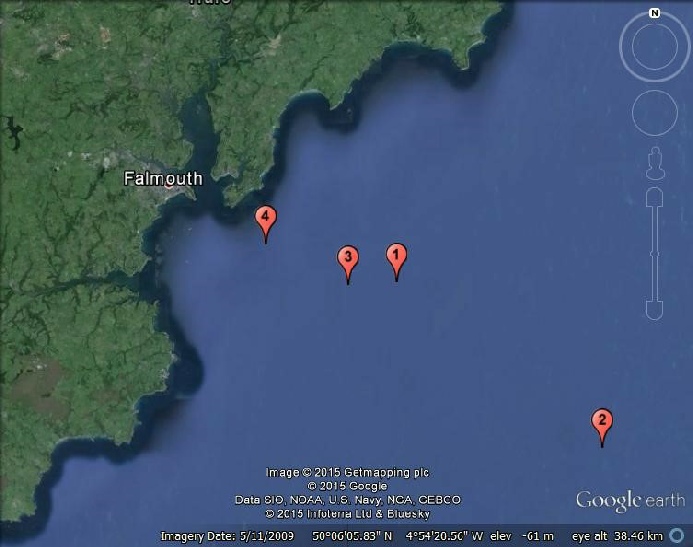

|
|
Station 1 |
Station 2 |
Station 3 |
Station 4 |
|
Time (UTC) |
11:10 |
13:36 |
15:23 |
16:05 |
|
Latitude |
50°05.806N |
50°00.089N |
50°05.716N |
50°07.114N |
|
Longitude |
004°51.724W |
004°40.689W |
004°54.329W |
004°58.761W |
|
Weather |
Overcast, low cloud (8/8), fine rain, choppy seas |
Overcast, mid cloud (8/8), no precipitation, choppy seas- |
Mid/high cloud (7/8), no precipitation, slightly choppy calmer than previous. |
High cloud (6/8), no precipitation, moderately calm sea |
|
Wind speed (knots) |
10.5 |
14 |
12.5 |
14.1 |
|
Wind direction |
325.5° |
327.1° |
337.1° |
337.1° |
|
Water depth (m) |
65 |
72.4 |
63.1 |
32.2 |